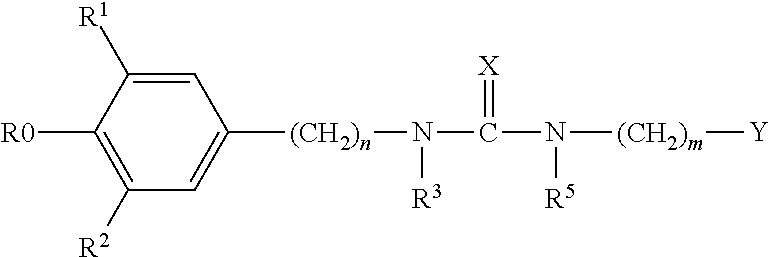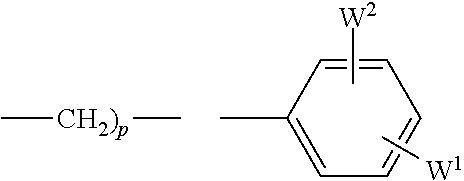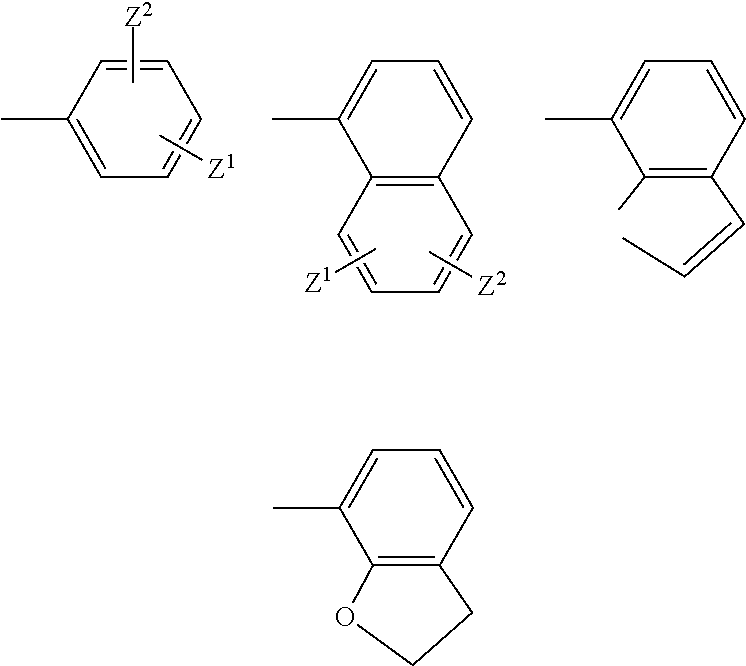Treatment of ophthalmic disorders using urea
a technology of ophthalmic disorders and urea, applied in the direction of biocide, cardiovascular disorders, drug compositions, etc., can solve the problems of cystoid macular edema, idiopathic macular holes, rhegmatogenous retinal tears, etc., and achieve the effect of removing vitreoretinal traction
- Summary
- Abstract
- Description
- Claims
- Application Information
AI Technical Summary
Benefits of technology
Problems solved by technology
Method used
Image
Examples
example i
[0041]Seven male and five female human patients having an average age of 47 years were observed to have single or multiple retinal tears, in addition 9 of the 12 patients had macular detachment. All patients received pneumatic Retinopexy treatment 3 days after intravitreal injection of 1.5 mg of urea in 50 μl of aqueous solution prepared according to the formulation set forth in Table 11 above. Ophthalmoscopic as well as biomicroscopic examination of all eyes showed no adverse effects of the intravitreal injection of the urea solution. Within 3-7 days after urea injection, 11 / 12 patients had developed PVD, only 1 / 12 patients had not developed PVD. Within 90 days of the urea injection that one patient also developed PVD.
[0042]Within 3 days of treatment 9 / 12 patients had complete retinal reattachment and macular attachment, and within 7 days all 12 patients had complete retinal reattachment and macular attachment. All patients were followed up for a period of...
example ii
Treatment of Idiopathic Macular Hole
[0044]A female patient 58 years old was observed to have a 450 μm idiopathic macular hole of 6 months duration. The macular defect was classified as a stage 3 macular hole, and the patient's visual acuity was recorded at 20 / 400 at a baseline time point prior to urea treatment. The subject was administered a single intravitreal injection of a formulation containing 1.5 mg of urea in a 50 μl solution prepared in accordance with the formulation of Table III above, and within 7 days the patient had a complete Posterior Vitreous Detachment (PVD). Ophthalmoscopic as well as Biomicroscopic examination of the patient's eye showed no adverse effects of the intravitreal injection of the urea solution. Seven days after the intravitreal urea injection the patient was administered an intravitreal injection of 0.3 ml of expandable gas (C3F8).
[0045]One week after administration of the gas, the size of the macular hole had decreased from 450 μm to a smaller size ...
example iii
Intravitreal Urea Injection as an Adjuvant in Pneumatic Retinopexy
[0048]The present invention provides a method to reduce vitreoretinal traction and induce total posterior vitreous detachment (t-PVD) in subjects with primary regmatogen retinal detachment (PRRD) susceptible of treatment by pneumatic retinopexy was practiced by administering a formulation containing urea formulation set forth in Table II (VRT-1001) to the patients.
[0049]Consecutive patients of both genders with PRRD eligible for treatment with pneumatic retinopexy where enrolled after informed consent. A 0.3 ml intravitreal injection of the urea formulation set forth in Table II (VRT-1001, Vitreoretinal Technologies Inc., Irvine, Calif., USA) was administered, and pneumatic retinopexy was performed the next day, using 0.4 ml of 100% C3F8. Argon laser was applied as soon as possible to seal the retinal tears. Before, and 1, 7, 15, 30 and 90 days after the procedure, patients were monitored with biomicroscopy, posterior...
PUM
| Property | Measurement | Unit |
|---|---|---|
| diameter | aaaaa | aaaaa |
| size | aaaaa | aaaaa |
| size | aaaaa | aaaaa |
Abstract
Description
Claims
Application Information
 Login to View More
Login to View More - R&D
- Intellectual Property
- Life Sciences
- Materials
- Tech Scout
- Unparalleled Data Quality
- Higher Quality Content
- 60% Fewer Hallucinations
Browse by: Latest US Patents, China's latest patents, Technical Efficacy Thesaurus, Application Domain, Technology Topic, Popular Technical Reports.
© 2025 PatSnap. All rights reserved.Legal|Privacy policy|Modern Slavery Act Transparency Statement|Sitemap|About US| Contact US: help@patsnap.com



